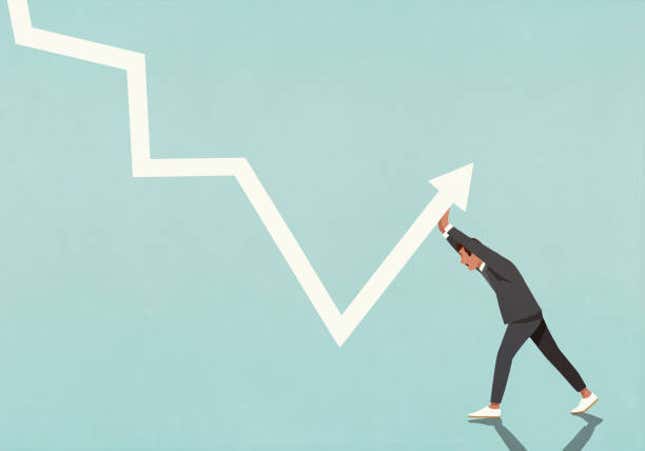
Like the gyrations in the stock market, economists have gone back and forth on recession predictions. A year or so ago there was a broad consensus among experts that there would be a recession in 2024 — but it never materialized. By this year, amid strong a strong job market and cooling inflation, such talk had died down.
Then President Donald Trump ignited a trade war, and the recession talk roared back, louder than ever. Ever since Trump first announced earlier this month that he would raise tariffs on almost every country in the world, more and more expert voices have joined the recession chorus.
Morgan Stanley (MS) places the odds of a recession this year at 40%, Goldman Sachs (GS) thinks the likelihood is 45%, and the cautious International Monetary Fund puts the chance of a U.S. recession at 40%, up from 25% last October.
There’s more. JPMorgan Chase (JPM) has said the chance of a recession this year is 65%, renowned Wall Street economist David Rosenberg thinks the odds are as high as 85%, and Torsten Slok, chief economist at Apollo Global Management (APO), calculates the chances of what he calls a “voluntary trade reset recession” at an almost certain 90%. Ray Dalio, the billionaire hedge fund manager of Bridgewater Associates, said recently that he’s worried about “something worse than a recession” because of the trade war.
A recession is generally defined as two consecutive quarters of declining GDP, and there are no shortages of such predictions. The Institute of International Finance, which represents some 400 banks, hedge funds, and other financial firms, published a note last week predicting that the U.S. economy is likely to shrink by 0.8% in the third quarter, and 0.3% in the last three months of 2025.
In its monthly survey of some 80 economists, Bloomberg said that in April the median respondent now sees a 45% chance of a downturn in the next 12 months, up from 30% in March.
Of course, economics is an inexact science, and one can find comfort in the old saw that “economists have predicted nine of the last five recessions.” If concerns about a trade war are driving recession fears, would the outlook turn positive if Trump cuts deals and lowers tariffs, as he has claimed he will?
Possibly, but there are numerous signs that the economy is already weakening.
- The Conference Board’s Leading Economic Indicator declined by 0.7% in March to 100.5 after a decline of 0.2% in February, pointing to “slowing economic activity ahead.”
- In March the stock market recorded its largest monthly decline since September 2022, and April doesn’t look much better. The S&P 500 dropped some 8% during Trump’s first 100 days, its largest drop during a president’s so-called “honeymoon period” in 50 years.
- Global trade is already suffering from the trade war. There’s been a steep drop in container shipments to California ports, and the World Trade Organization is now forecasting an 0.2% decline in global merchandise trade for the year, with North American exports expected to be down 12.6%.
- The sale of previously owned homes across the United States fell 5.9% in March from the previous month, according to the National Association of Realtors, and the pace of housing sales fell to its lowest level since the 2009 subprime mortgage crisis.
- The University of Michigan’s April consumer-sentiment index declined for the fourth straight month, sliding to 50.8 from 57 in March. Expectations of rising inflation hit the highest level in 44 years. Consumer sentiment is often self-fulfilling—if consumers think the economy is going south, they are less likely to spend.
- International tourism is off, with a 10% decline in overseas visitors arriving by air in March from the prior year, according to the International Trade Association. Southwest Airlines CEO Bob Jordan said last week that domestic leisure travel is cratering and the carrier’s second-quarter revenue will likely fall six percentage points as a result. “I don’t care if you call it a recession or not, in this industry that’s a recession,” he said.
Some closely watched economic indicators are due out in the next few days — the first quarter GDP estimate, April unemployment numbers, and S&P’s Global Purchasing Managers’ Index among them. Expect economists to rapidly weigh in on whether or not a recession is more, or less, likely this year depending on how those critical data points perform,.